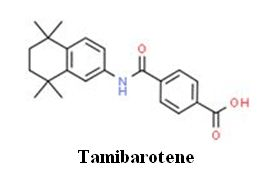VITAMIN A, RETINOIC ACID AND TAMIBAROTENE, A FRONT TOWARD ITS ADVANCES: A REVIEW
Keywords:
Gene transcription, molecular model of RA, retinoic acid and retinoid pharmacology, Vitamin AAbstract
Vitamin A and its derivative retinoic acid (13-cis RA, 9-cis RA, all-trans RA) and recent tamibarotene have been shown a broad variety of biological actives in human, such as vision, embryonic development, cell growth and cellular differentiation and immune function. These precise functions of RA are mediated by their retinoic acid receptors (RARs). In the past five decades, retinoic acid (RA) proved therapeutic benefits in cancer prevention, in skin diseases and in acute promyelocytic leukemia (APL).The elucidation of the molecular basis of vitamin A acid and its retinoid pharmacology in APL has been illustrated in several publications, the detail molecular model of gene regulation had also been proposed by Zhu in earlier 90s. A molecular model is further revised. As an approach to APL treatment, one possible the action of retinoic acid (RA), A consensus sequence (TCAGGTCA motif ) has been postulated for thyroid hormone (TRE) and retinoic acid responsive element (RARE)-containing in the promoter region of target genes. High dose of RA-RARE-PML/RARa complexes in intracellular localization appears to relieve repressors from DNA-bound receptor, including the dissociation of co-re pressor complexes N-CoR, SMRT and HDACs from PML-RARa or PML-RARa/RXR. Also release PML/RARa -mediated transcription repression. This transcriptional derepression occurs at RARa target gene promoter. Consequentially, PML-RARa chimera converted receptor from a repressor to a RA-dependent activator of transcription. The resulting pml-RARA oncoprotein proteolytic degradation occurs through the autophagy-lysosome pathway and the ubiquitin SUMO-proteasome system(UPS) as well as caspase 3, or lysosomal protease (cathepsin D) enzyme or/and EI-like ubiquitin-activating enzyme(UBEIL) induction. Accordingly the expression level of PML-RARa downregulated. PML protein relocalizes into the wild-type nuclear body (PML-NB) configuration or a truncated PML-RARa fusion fragment detected or/and the wild-type RAR upregulated. An effect is to relieve the blockade of pml/RARa-mediated RA dependent promyelocytic differentiation, and retinoic acid (9-cis RA,ATRA, Am80) in APL therapy. Here, oncogenic pml/RARa as constitutive transcriptional repressor that block myeloid differentiation at promyelocytic phenotype. RA can overcome the transcrptional repressor activity of pml/RARa. The oncogenic pml/RARa uncovers a pathogenic role in leukemogenesis of APL through blocking promyelocytic differentiation. This oncogenic receptor derivative pml/ RARa chimera is locked in their "off" regular mode thereby constitutively repressing transcription of target genes or key enzymes (such as AP-1, PTEN, DAPK2,UP.1, p21WAF/CCKN1A)that are critical for differentiation of hematopoietic cells. This is first described in eukaryotes.

Peer Review History:
Received 26 September 2018; Revised 2 November; Accepted 27 December; Available online 15 January 2019
Academic Editor:
Dr. Sally A. El-Zahaby , Pharos University in Alexandria, Egypt, sally.elzahaby@yahoo.com
, Pharos University in Alexandria, Egypt, sally.elzahaby@yahoo.com
Reviewer(s) detail:
Dr. Asia Selman Abdullah , Al-Razi university, Department of Pharmacy, Yemen, asia_abdullah65@yahoo.com
, Al-Razi university, Department of Pharmacy, Yemen, asia_abdullah65@yahoo.com
Dr. Sunita Singh , Baylor College of Medicine, Houston, Texas, USA, sunita.nccs@gmail.com
, Baylor College of Medicine, Houston, Texas, USA, sunita.nccs@gmail.com
Dr. Nuray Arı , Ankara University, Turkiye, ari@ankara.edu.tr
, Ankara University, Turkiye, ari@ankara.edu.tr
Downloads

Published
How to Cite
Issue
Section

This work is licensed under a Creative Commons Attribution-NonCommercial 4.0 International License.









 .
.